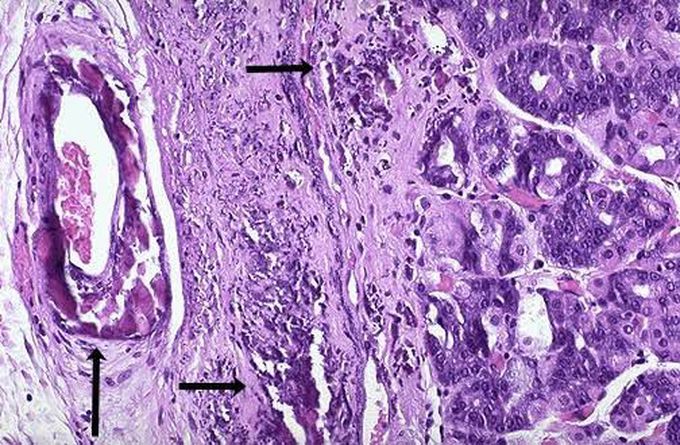

Iqraover 3 years ago

Dystrophic calcification
It is characterized by deposition of calcium salt in dead or degraded / degenerated tissue with normal calcium metabolism and normal serum calcium level. It commonly develop in aging or damaged heart valves. The calcium salts microscopically appears as fine, white granules or clumps often felt as gritty deposits. In the pathogenesis of dystrophic calcification the final common pathway is the formation of crystalline calcium phosphate mineral in the form of an apitite similar to an the hydroxyapatite of bone. The process basically has two major phases : Initiation ( or nucleation ) and propagation; both can occur intracellulary and extracellulary.
Other commentsSign in to post comments. You don't have an account? Sign up now!

